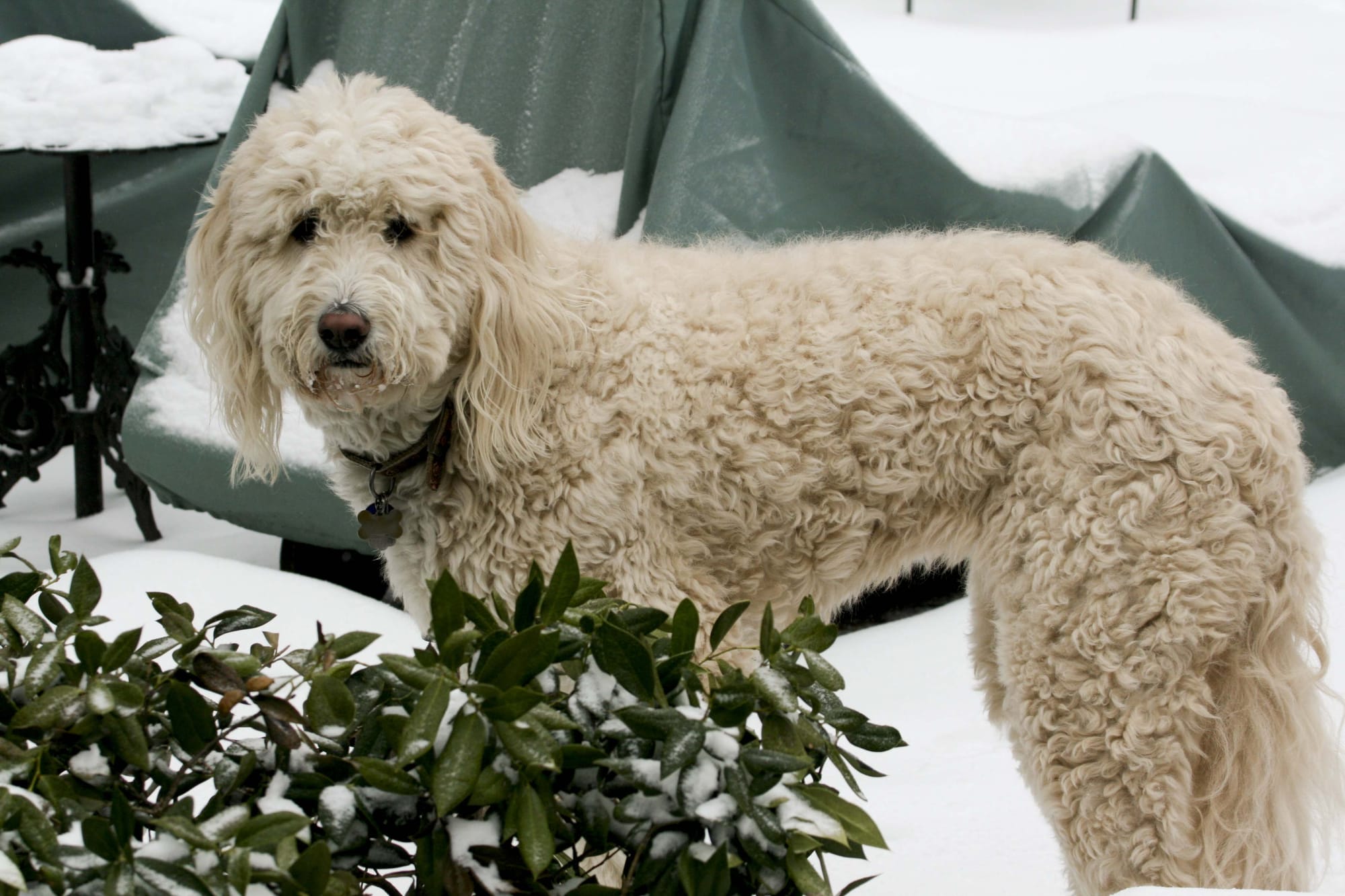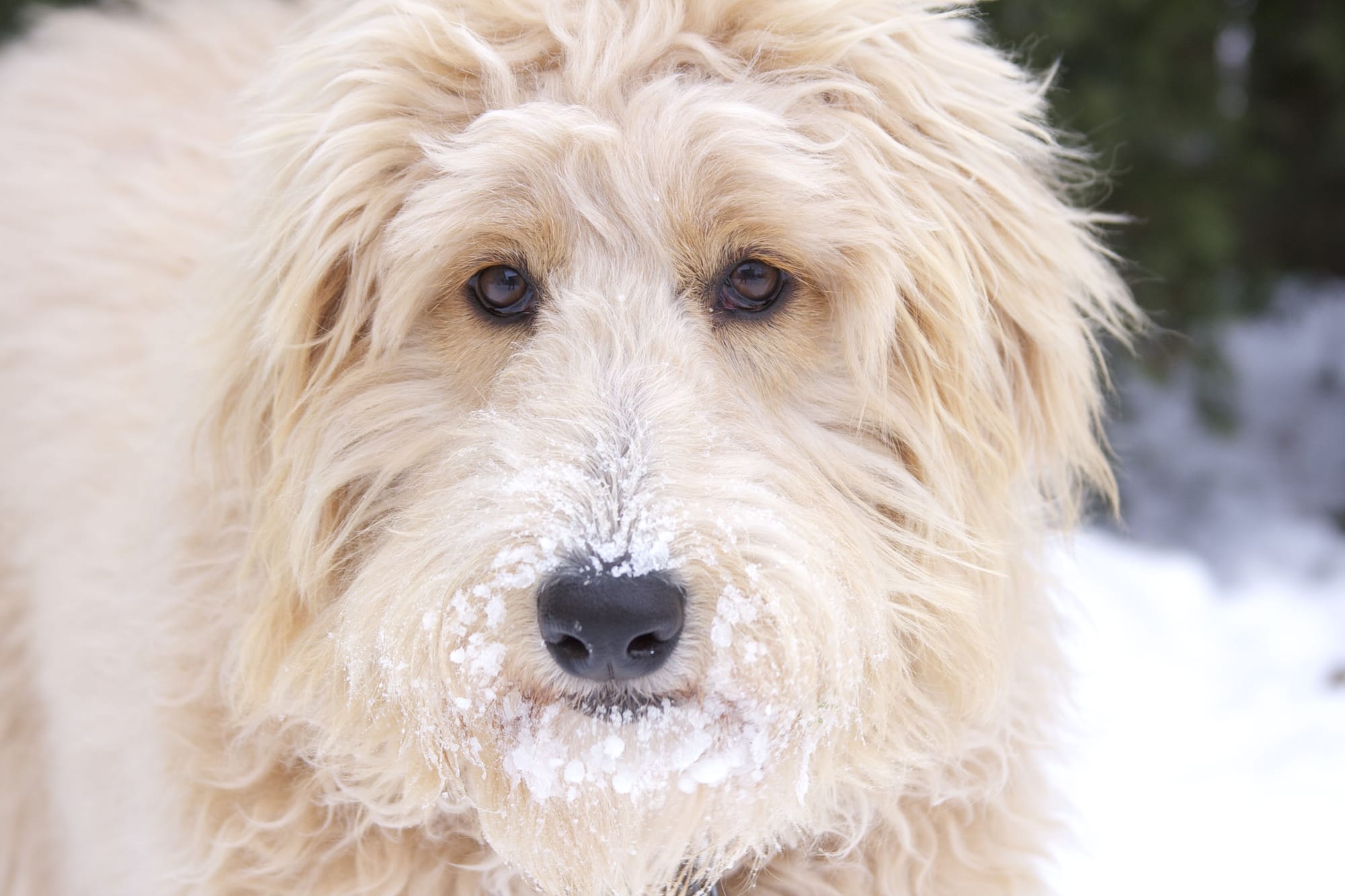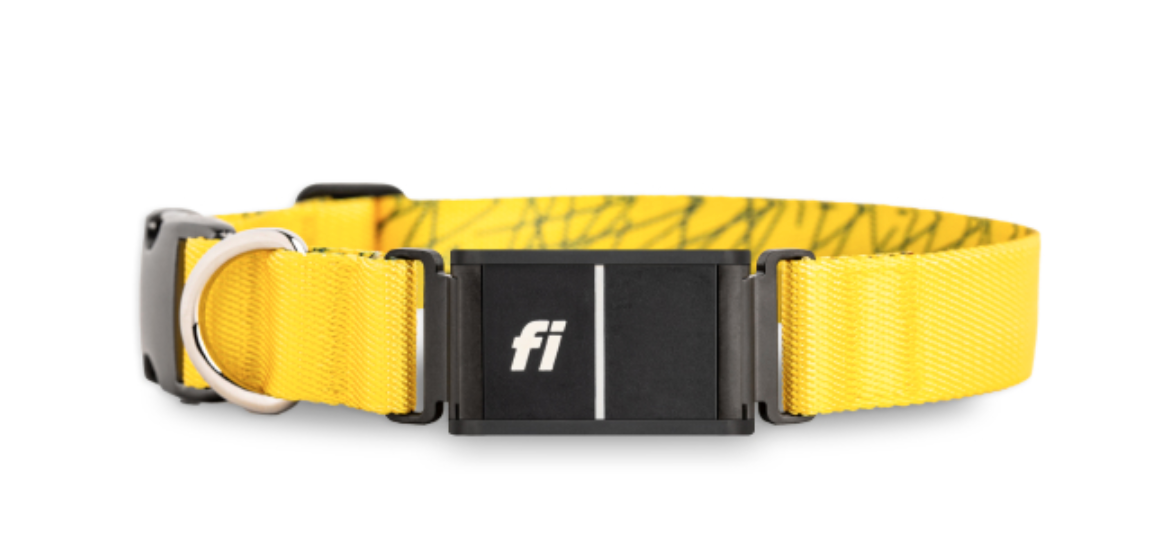The Pyredoodle is a designer dog breed that is a cross between a Great Pyrenees and a Poodle. This breed is known for its friendly and loyal nature, making it a perfect family pet. The Pyredoodle is also a superb option for those who suffer from allergies, as they have hypoallergenic coats.

Pyredoodles are a relatively new breed, so there is still a lot to learn about them. However, they are quickly gaining popularity due to their charming personalities and unique appearance. These dogs are typically large in size and have a thick, curly coat that can come in various colors. They are also highly intelligent and trainable, making them ideal candidates for obedience training and other activities. Thus, the Pyredoodle is a flawless choice for anyone looking for a loyal and affectionate companion.
Breed Overview
History and Origin
The Pyredoodle is a relatively new designer breed that has achieved popularity in recent years. It is a cross between the Great Pyrenees and the Poodle, two breeds with very different origins. The Great Pyrenees is an ancient breed that was originally bred to guard livestock in the Pyrenees Mountains between France and Spain. The Poodle, on the other hand, is a much more recent breed that was developed in Germany and France as a water retriever and performer.

The Pyredoodle was first bred in the United States in the 1990s and has since become a popular companion dog. The breed is not recognized by the American Kennel Club (AKC) as it is a designer breed, but it is recognized by the Designer Breed Registry (DBR) and the International Designer Canine Registry (IDCR).
Pyredoodle Characteristics
The Pyredoodle is a large dog that can weigh anywhere from 50 to 100 pounds and stand up to 32 inches tall at the shoulder. They have a thick, curly coat that can be white, cream, or gray in color. This coat requires regular grooming to prevent matting and tangling.
Pyredoodles are known for their protective and loyal nature. They make outstanding family dogs and are gentle with children. They are also very clever and easy to train, making them suitable for novice owners. Pyredoodles are affectionate and love to be around their owners, but they can be wary of strangers and may require socialization to prevent aggression.
Hence, the Pyredoodle is an ultimate companion for those looking for a protective, loyal, gentle, intelligent, and affectionate dog. While they may require some grooming and socialization, they are a great addition to any family.
Physical Attributes

Size and Weight
Pyredoodles are a medium to large-sized dog breed that can vary in size and weight depending on their parents' genetics. On average, they can grow up to 25-32 inches in height and weigh between 50-100 pounds. Male Pyredoodles are typically larger and heavier than females.
Coat and Colors
Pyredoodles have a thick, fluffy, and curly coat that can be either single or double-layered. Their coat colors can range from white, black, apricot, cream, gray, to brown. Some Pyredoodles may also have a combination of these colors in their coat. The texture of their coat is soft and wavy, making them hypoallergenic and suitable for people with allergies.
Distinctive Features
Pyredoodles have distinct features that make them stand out from other breeds. They have long and floppy ears that hang down to their cheeks, giving them a cute and adorable look. Their face is broad and square-shaped with a black nose and dark, expressive eyes. Pyredoodles also have long and bushy tails that they carry high and curled over their back.
Overall, Pyredoodles are a beautiful and unique breed that has a lot to offer. Their size, coat, and distinctive features make them an excellent choice for families looking for a loyal and loving companion.
Temperament and Behavior
Personality Traits
Pyredoodles are comprehended for their gentle and loving nature. They are smart dogs and tend to be calm and independent. They are also known to be stubborn at times, but with proper training, they can be easily trained. Pyredoodles are protective of their family and can be wary of strangers, making them great watchdogs.
Behavioral Tendencies
Pyredoodles have a moderate energy level and are prone to wandering. They require regular exercise and mental stimulation to keep them happy and healthy. They are known to be gentle giants and are great with children. However, it is crucial to supervise interactions between children and Pyredoodles to ensure that they do not accidentally knock over small children due to their size.
Pyredoodles are generally well-behaved and do not have any major behavioral concerns. However, they may exhibit destructive behavior if they are not given enough attention or exercise. They are loyal and affectionate dogs, making them great family pets. With proper socialization, they can get along well with other pets as well.
Therefore, Pyredoodles have a great temperament and are well-behaved dogs. They are protective of their family and are intelligent and independent. They require regular exercise and mental stimulation to keep them happy and healthy.
Health and Care
Common Health Issues
Like any other breed, Pyredoodles are prone to specific health issues. Some of the common health problems that Pyredoodles may face include hip dysplasia, bloat, and allergies. Hip dysplasia is a genetic condition that affects the hip joint and can cause pain and discomfort. Bloat, also known as gastric torsion, is a serious condition that can occur when the stomach twists and fills with gas. Allergies can cause skin irritation, itching, and other symptoms. It's important to keep an eye out for any signs of these health issues and to take your Pyredoodle to the vet for regular check-ups.
Diet and Nutrition
Pyredoodles require a balanced diet that is high in protein to maintain their energy levels. It's critical to feed your Pyredoodle a diet that is appropriate for their size and activity level. Overfeeding your Pyredoodle can lead to obesity and weight gain, which can cause health troubles down the line. Consult with your vet to determine the best diet for your Pyredoodle.
Exercise Requirements
Pyredoodles are an active breed that requires regular exercise to stay healthy and happy. They enjoy long walks, runs, and playing in open spaces. Pyredoodles also require mental stimulation, such as training and puzzle toys, to keep their minds engaged. It's significant to provide your Pyredoodle with regular exercise and mental stimulation to prevent boredom and destructive behavior.
Grooming Needs
Pyredoodles have a thick, curly coat that requires regular grooming to prevent matting and shedding. They should be brushed at least once a week and bathed as needed. It's important to keep their ears clean and dry to prevent infections. Pyredoodles also require regular nail trimming and dental care to maintain their overall health.
Fi GPS Tracking Dog Collar
Fi GPS tracking Dog Collar is ideal for helping keep your Pyredoodle in the best shape. It enables you to track the dog's exertion levels and steps, which you can compare to other dogs of similar breeds within your neighborhood.

These tracking collars come in four core colors: pink, blue, gray, and yellow. They're a perfect fit for dogs whose neck sizes range between 11.5 and 34.5 inches. With its GPRS tracking feature, you'll instantly get a phone alert if your pup friend ever gets out unexpectedly.
Training and Socialization
Training Techniques
Pyredoodles are intelligent and eager to please, making them relatively easy to train. Positive reinforcement techniques, such as rewarding good behavior with treats or praise, are effective for training Pyredoodles. Consistency is key when training this breed, so it's important to use the same commands and training techniques consistently.
Basic obedience commands, such as sit, stay, and come, should be taught early on in a Pyredoodle's training. These commands provide a foundation for more advanced training and help establish the owner as the pack leader. Pyredoodles also excel at learning tricks and enjoy mental stimulation, so incorporating puzzles and games into their training can be beneficial.
Socialization Importance
Socialization is crucial for Pyredoodles to develop into well-adjusted and confident dogs. Early socialization with a variety of people, animals, and environments can help prevent fearfulness and aggression later in life. It's important to expose Pyredoodles to new experiences in a positive and controlled manner.
Owners should start socializing their Pyredoodle as early as possible, ideally during the puppy stage. Puppy socialization classes can be a great way to introduce a young Pyredoodle to new experiences and other dogs. As the Pyredoodle grows older, continued socialization through regular interactions with other dogs and people can help maintain their social skills.
Overall, Pyredoodles are an intelligent and trainable breed that benefit from positive reinforcement and consistency in their training. Socialization is also crucial for their development and should be started early and continued throughout their lives.
Living with a Pyredoodle

Home Environment
Pyredoodles are a great choice for families who have a lot of space in their homes and yards. They are large dogs that need plenty of room to move around and play. They are also known to be quite active, so having a yard where they can run and play is ideal. However, they can adapt to apartment living as long as they receive enough exercise and attention.
Family Integration
Pyredoodles are known to be great family dogs. They are affectionate and love to be around people. They are also great with children and other pets. However, it is important to supervise interactions between young children and the dog, as Pyredoodles can be quite large and may accidentally knock over small children.
Adaptability
Pyredoodles are adaptable dogs that can fit into a variety of living situations. They are intelligent and can learn quickly, making them easy to train. However, they can become destructive if they are bored or do not receive enough attention. They also need to be properly socialized to prevent any aggression towards strangers or other dogs.
Overall, living with a Pyredoodle can be a rewarding experience for those who are willing to provide them with the care and attention they need. They make great family dogs and are known to be affectionate and loyal. However, they do require a lot of exercise and attention to prevent any destructive behavior.
Adoption and Purchasing
Choosing a Pyredoodle
Before adopting or purchasing a Pyredoodle, it is important to research and understand the breed characteristics. Pyredoodles are a crossbreed between a Great Pyrenees and a Poodle, resulting in a large and intelligent dog that is known for being loyal, affectionate, and protective.
Potential owners should consider their lifestyle and living arrangements before deciding to bring a Pyredoodle into their home. Due to their size and energy levels, Pyredoodles require ample space to run and play. They also require regular exercise and mental stimulation to prevent boredom and destructive behavior.
Finding a Reputable Breeder
When looking for a Pyredoodle breeder, it is important to find a reputable one that prioritizes the health and well-being of their dogs. Reputable breeders will conduct health screenings on their dogs and provide documentation to potential buyers.
It is also recommended to visit the breeder's facility and meet the parent dogs to assess their temperament and living conditions. A good breeder will be knowledgeable about the Pyredoodle breed and provide ongoing support and resources to new owners.

Adoption Options
For those interested in adopting a Pyredoodle, there are several options available. Many animal shelters and rescue organizations have Pyredoodles available for adoption. Adopting a Pyredoodle can be a rewarding experience while also providing a loving home to a dog in need.
It is important to note that Pyredoodles is a mixed breed and can exhibit a wide range of physical and behavioral traits. Potential adopters should be prepared to provide adequate training and socialization to their new pets.
Overall, whether adopting or purchasing, it is necessary to do thorough research and choose a reputable breeder or adoption organization to ensure a happy and healthy life for your Pyredoodle.
Final Thought
In conclusion, the Pyredoodle is a remarkable mixed breed that combines the best traits of the Great Pyrenees and Poodle. With their caring nature, intelligence, and versatility, Pyredoodles make wonderful companions for families of all sizes. Whether as a beloved pet or a dedicated working partner, the Pyredoodle continues to captivate the hearts of dog lovers around the world.




